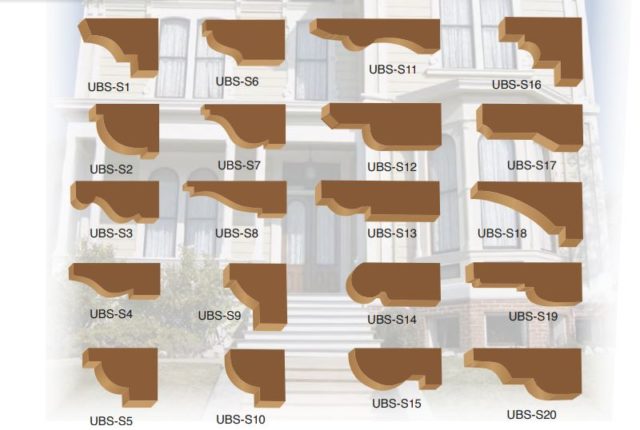When it comes to enhancing your outdoor living space, decorative ends for pergolas play a crucial role. Not only do they add a touch of elegance, but they also contribute to the overall structural integrity of your pergola. As a homeowner who recently added a pergola to my backyard, I can personally attest to the joy and beauty that decorative ends bring. In this extensive guide, we will explore everything you need to know about decorative ends, from styles and materials to installation and maintenance tips.
What Are Decorative Ends for Pergolas?
Decorative ends are the architectural features that adorn the beams or rafters of a pergola. They can range from simple cuts to intricate designs, providing not only aesthetic value but also complementing the overall design of your outdoor space. Here are some popular styles:
- Curved Ends: Soft and elegant, curved ends provide a sophisticated look.
- Straight Cuts: A clean, modern option that emphasizes simplicity.
- Knotty Pine Ends: Emphasizes a rustic feel with natural wood textures.
- Decorative Brackets: Adds dimension and detail, turning a simple pergola into a statement piece.
Benefits of Installing Decorative Ends
Adding decorative ends to your pergola can significantly enhance both its look and functionality. Here are some key benefits:
- Aesthetic Appeal: Decorative ends elevate the visual interest of your structure.
- Increased Property Value: A well-designed outdoor area can boost your home’s overall value.
- Improved Structure: Some designs can offer additional support to the pergola.
- Customizable Designs: You can tailor the design to reflect your personal style.

Materials for Decorative Ends
The choice of material for your decorative ends can greatly impact their durability and appearance. Here are some common materials:
Wood
Wood is a popular choice for its natural beauty and versatility. Different types such as cedar, redwood, or pressure-treated lumber can be used.

Metal
Metal ends provide a sleek, modern look and are often powder-coated for durability. Options include aluminum or wrought iron.
Vinyl
Vinyl is a low-maintenance option that mimics the look of wood without the upkeep. It resists fading and cracking.

Popular Decorative End Styles
Choosing the right style can be daunting, especially with so many options available. Here’s a breakdown of popular styles:
1. Classic Style
This style features straightforward, clean designs that fit well in any setting. Classic ends are perfect for traditional homes.

2. Contemporary Style
For a modern aesthetic, consider geometric patterns or sleek lines that contribute to a clean look.
3. Rustic Style
If you prefer a more organic touch, rustic styles with knotty finishes and rough edges are ideal.

4. Mediterranean Style
Mediterranean designs often incorporate arches and columns, reminiscent of ancient architecture.
Comparison of Decorative End Styles
| Style | Aesthetic Appeal | Maintenance Requirements | Best For |
|---|---|---|---|
| Classic | Timeless elegance | Low | Traditional homes |
| Contemporary | Sleek and modern | Very low | Modern design lovers |
| Rustic | Warm and earthy | Moderate | Cottage or natural settings |
| Mediterranean | Ornate and artistic | Moderate | Stylish outdoor settings |

Installation Tips for Decorative Ends
Proper installation is essential for both appearance and durability. Here are some tips based on my experience:
1. Measure Accurately
Before you start cutting or buying materials, make sure to measure your pergola accurately to ensure a perfect fit.
2. Choose the Right Tools
Using the right tools can make the process smoother. You’ll typically need a circular saw, measuring tape, level, and drill.
3. Consider Professional Help
If you’re not experienced in DIY projects, hiring a professional can save time and ensure quality results.
4. Follow Safety Protocols
Always wear safety glasses and take proper precautions when working with power tools.
Maintaining Your Decorative Ends
Keeping your decorative ends in good condition ensures longevity and beauty. Here are some maintenance tips:
- Regular Cleaning: Clean surfaces to remove dirt and debris.
- Inspect for Damage: Check for signs of wear or rot, especially in wooden ends.
- Sealing: Consider sealing wood or metal designs to protect against weathering.
Pros and Cons of Decorative Ends
Pros
- Enhances curb appeal
- Increases property value
- Allows for personalization
- Potentially improves structural integrity
Cons
- Can be costly depending on materials and designs
- May require additional maintenance
- Some styles may not suit all home designs
Frequently Asked Questions (FAQs)
What are the best materials for decorative ends?
The best materials depend on your aesthetic preference and maintenance capabilities. Wood offers natural beauty, metal provides durability, and vinyl is low-maintenance.
Can I install decorative ends myself?
Yes, if you have the right tools and experience. However, for complex designs or if you’re unsure, hiring a professional can ensure quality work.
How much do decorative ends typically cost?
Costs can vary widely depending on the material and design, ranging from $50 to $500 or more per end.
Do decorative ends affect the stability of a pergola?
While primarily aesthetic, some designs can contribute to added support. It’s essential to ensure structural integrity during installation.
What styles of decorative ends are trending?
Contemporary and rustic styles are currently popular, with many homeowners looking to blend traditional designs with modern aesthetics.
Conclusion
Decorative ends for pergolas are more than just stylish additions; they offer a unique way to express your taste and enhance your outdoor space. From choosing materials and styles to installation and maintenance tips, I hope this guide has provided you with valuable insights. Remember to take your time selecting the right design that resonates with your aesthetic and complements your home. Happy decorating!